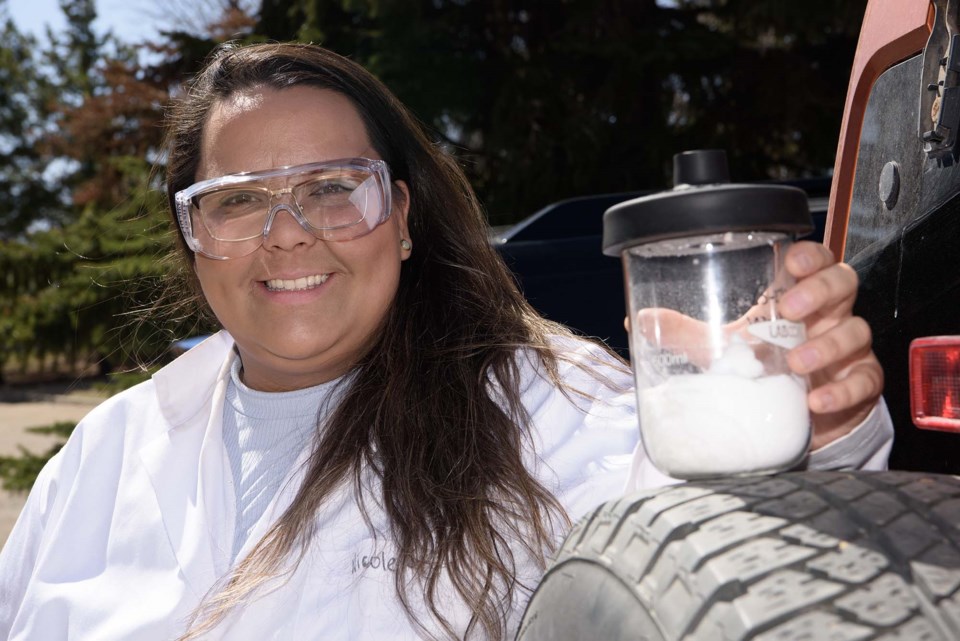A company co-founded by a St. Albert scientist has won a federal grant to see if tiny rods can counteract the big problem of microplastics from tires.
Federal Environment and Climate Change Minister Steven Guilbeault announced April 26 that Applied Quantum Materials Inc. of Edmonton had received a $150,000 grant to develop an additive which would reduce microplastic pollution from tires. The grant was part of the federal government’s efforts to reduce plastic pollution.
“Our government is committed to ending plastic waste in Canada,” Guilbeault said in a media release.
“We need smart innovations to create a more circular economy to recycle the plastics we consume.”
Applied Quantum Materials (AQM) is a research company that specializes in nanomaterials, particularly those made from silicon, said company co-founder Jonathan Veinot, a St. Albert resident and chemistry professor at the University of Alberta. The company has previously produced sunlight-harvesting windows, bomb-sniffing sensors, and more recently test kits used by Alberta Health Services to detect COVID-19.
Tiny rods, big impact
Microplastics are particles smaller than five millimetres which flake plastic-containing objects, particularly clothes and tires. Researchers have detected microplastics virtually everywhere on Earth, including inside fish, beer, salt, sugar, honey, air, water, and people, and are just now beginning to understand how they could affect human health and the environment.
Tire wear is a major source of microplastic pollution, with some six million tonnes of particles flying off tires each year, Environment Canada reports. These particles contain potentially toxic chemicals and make up three to seven per cent of airborne particulate matter — a pollutant linked to heart and lung disease.
Tires are made of many materials besides rubber, including carbon black (so they look black), steel, various fillers and additives, and silica (sand), Veinot said. This federal grant will let AQM see if it can enhance the silica in tires with cellulose nanocrystals.
“A cellulose nanocrystal is the equivalent of a very small paper fibre,” Veinot said, and is often made from waste paper.
AQM researcher Nicole Jankovic said she and her team are taking silica particles and coating them with nanocrystals to create strong, tiny rods that are about 300 nanometers long and 75 wide — roughly a thousand times smaller than the width of a human hair. Once added to a rubber mix, these biodegradable rods should give tires more structural support, reducing wear, weight, microplastics, and potentially even fuel consumption. The team hopes the rods will reduce microplastic production by at least 10 per cent.
Jankovic said she and her team are now making the rods and will add various amounts of them to rubber strips in the next few months. (The rods should make up less than 10 per cent of a finished tire, she said.) By rubbing those strips with sandpaper, the team will determine if the rods reduce wear and what mix has the greatest effect. If they find a winning mix, the team will work with tire manufacturers to produce full-scale test tires.
Jankovic said this first phase of the project should be wrapped up in about four months. It will probably be years before this technology is used in commercial tires, assuming they can convince tire companies to use it.
Nanotechnology may be small, but this tire application could draw worldwide attention to Alberta and St. Albert if it works, Veinot said.
“It has the potential to have a global impact.”
Visit bit.ly/3L96Qjm for details on the grant.




